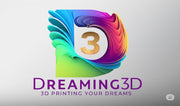In the realm of technological advancement, 3D printing stands as a beacon of innovation, transforming the way we conceive, design, and produce objects. Also known as additive manufacturing, 3D printing has transcended its initial applications in prototyping to become a versatile tool across various industries. This blog post delves into the fascinating world of 3D printing, exploring its origins, applications, and the exciting future it promises.
The Evolution of 3D Printing:
3D printing traces its roots back to the 1980s when Chuck Hull invented stereolithography, a process that laid the foundation for additive manufacturing. Since then, the technology has undergone significant advancements, both in terms of hardware and materials. Initially confined to industrial use, 3D printing has now become accessible to enthusiasts, hobbyists, and small businesses, thanks to the development of affordable desktop 3D printers.
Applications Across Industries:
-
Manufacturing and Prototyping: 3D printing revolutionized the prototyping process, enabling designers and engineers to quickly and cost-effectively turn digital designs into physical prototypes. This not only accelerates product development but also allows for rapid iterations and adjustments.
-
Healthcare: The healthcare industry has embraced 3D printing for a range of applications, from creating patient-specific implants and prosthetics to producing intricate models for surgical planning. The ability to tailor medical devices to individual patients has opened new frontiers in personalized medicine.
-
Aerospace: Aerospace engineers have harnessed 3D printing to fabricate lightweight yet robust components, reducing the weight of aircraft and spacecraft. This not only enhances fuel efficiency but also contributes to advancements in space exploration.
-
Automotive: The automotive sector leverages 3D printing for rapid prototyping, customizing components, and even manufacturing end-use parts. This has streamlined the design and production processes, leading to more efficient and innovative vehicles.
-
Architecture and Construction: Architects and builders are exploring the potential of 3D printing in construction. Large-scale 3D printers can create complex architectural structures with precision, offering a sustainable and time-efficient alternative to traditional construction methods.
The Future of 3D Printing:
As 3D printing continues to evolve, researchers and innovators are pushing the boundaries of what is possible. Here are some exciting prospects for the future of 3D printing:
-
Bioprinting: The field of bioprinting holds promise for printing living tissues and organs. This breakthrough could revolutionize organ transplantation, providing a solution to the shortage of donor organs.
-
Advanced Materials: Ongoing research focuses on developing new materials for 3D printing, including stronger metals, flexible polymers, and even composite materials. This will expand the range of applications and improve the performance of 3D-printed objects.
-
On-Demand Manufacturing: The concept of on-demand manufacturing, where products are printed as needed, could reshape the traditional supply chain. This has the potential to reduce waste, lower costs, and create more sustainable production processes.
Conclusion:
3D printing has transcended its initial role as a prototyping tool, evolving into a transformative force across industries. From healthcare to aerospace, this technology continues to push the boundaries of what is possible. As we look to the future, the prospects of bioprinting, advanced materials, and on-demand manufacturing signal that the world of 3D printing is only beginning to unveil its true potential. The journey of innovation continues, promising a future where the boundaries of creativity and manufacturing are limited only by our imagination.
